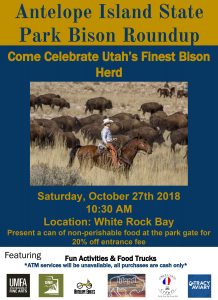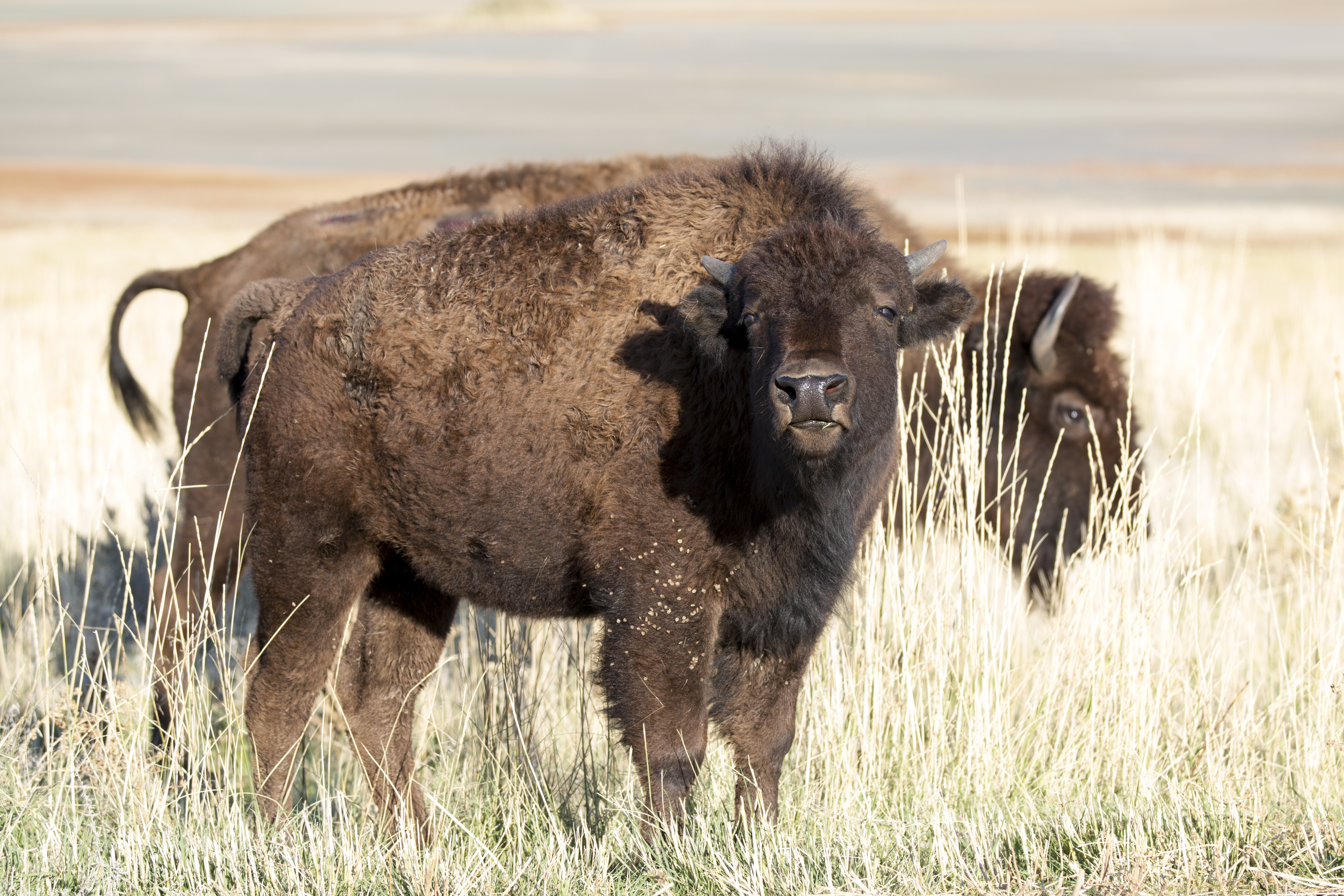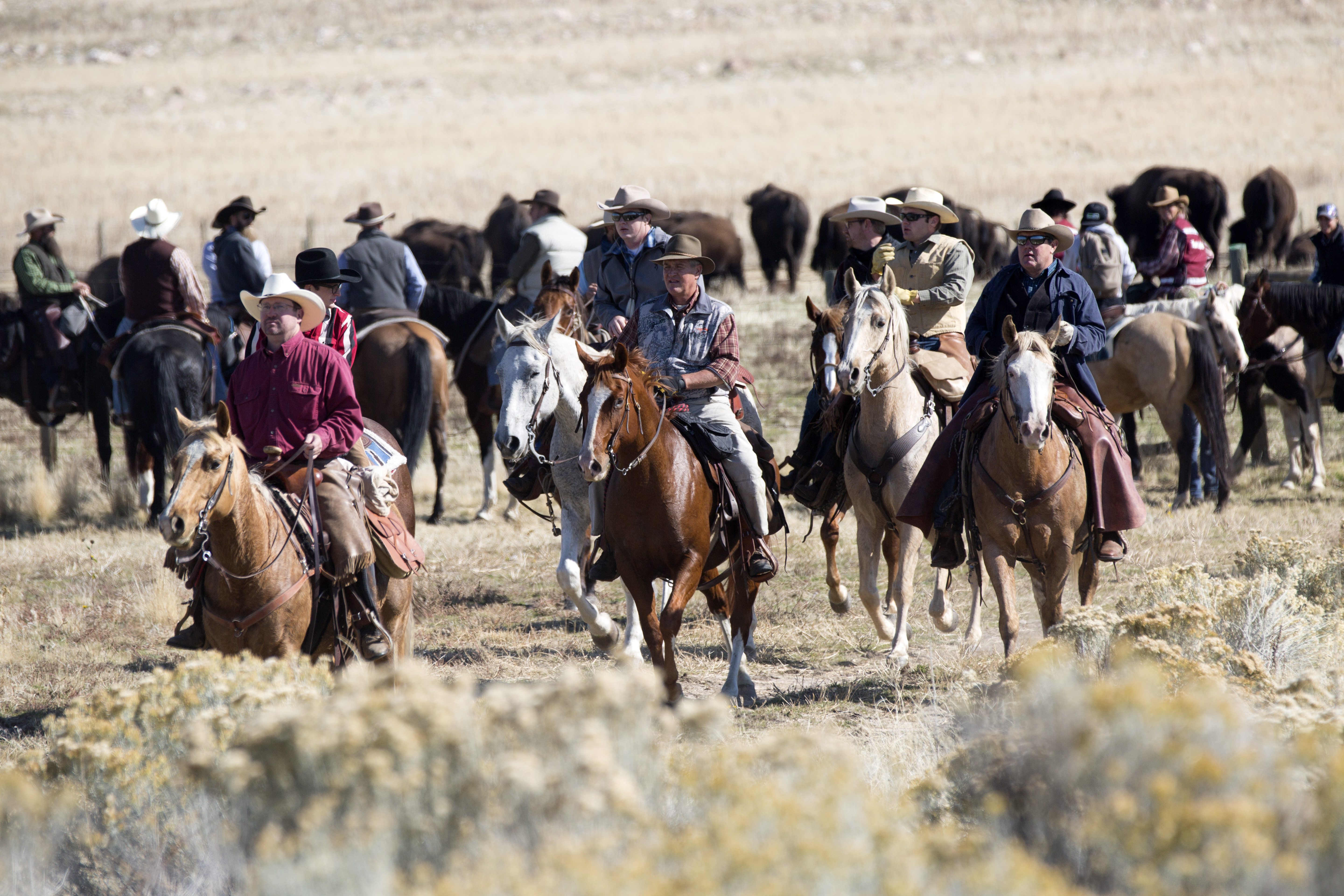The 2018 Antelope Island Bison Roundup is Here!
ANTELOPE ISLAND STATE PARK – Cowboys yelling at one another as their horses gallop through dirt and sagebrush. The sharp crack of whips echoing through the air. The thunderous rumble of over 700 Great American Bison charging across an open plain. This is the Antelope Island Bison Roundup.
Hosted each year at Antelope Island State Park, the Bison Roundup is a primary tool utilized to help ensure the continued health of one of the nation’s largest and oldest public bison herds. To help people better understand how the bison herd is managed, you can visit Antelope Island State Park on the day of the event and experience it first-hand.
The event begins at the Fielding Garr Ranch. From there, the bison are pushed across the island to the corrals near Whiterock Bay. Near the corral area, there will also be music, as well as food for purchase, educational information, and activities.
The riders start the push from Fielding Garr Ranch at 9:00 am. After that, viewers can drive the east side road and walk to the drift fence in White Rock Bay where the booths and activities will be hosted.
Visitors who present a can of non-perishable food at the park gate will also be given 20% off of their entrance fee. All of the food collected will be donated to the local food bank.
What happens at the Roundup?
There are two phases to the Bison Roundup. The first phase — which will take place on Saturday, October 27, 2018 — is where horse riders round up and push the bison into small herds. The riders then drive the bison into a holding corral where they rest for five days. This rest period helps reduce the animals’ stress levels and allows them to relax; making them more cooperative during the second phase.
Public riders are welcome to assist in this phase. These riders journey from across the world to participate in this event. Some have attended for over 30 years, while others are first-timers and new to riding in such an event.
This first phase is a popular event every year and attendees include both local spectators and visitors from around the world.
The second phase begins a week after the roundup, November 1 – 3, 2018. Here, the bison are sorted and separated one at a time to receive their vaccinations. They receive individual health screenings that include checks for pregnancies, parasites, and health issues.
The bison are also given a small external computer chip, which serves as a permanent ID that stores their health information. Once the bison are checked, they are either released back onto the island or kept in the corral where they are later sold in a public auction. Free public tours and media opportunities are available all three days of this phase.
Why are some bison sold at auction?
The manageable herd size for bison on the island is between 500-700 bison, and each year there are between 100-200 calves born into the herd. With no natural predators on the island capable of taking down a bison, it is necessary to artificially reduce the herd size to balance out the food supply.
It is also important to remember that there are other animals – such as pronghorn antelope, bighorn sheep, and mule deer – which also need to be considered when looking at the island’s overall food supply.
By selling excess bison at a public auction, park staff are able to keep the herd within a number the habitat can support. Ideally, the plan calls for a herd size of about 550 bison.
The revenue generated through the bison sale is used in the Wildlife and Habitat Management Program for operating costs, habitat, and bison infrastructure improvement and research. Some funds are also used toward fire protection and weed management.



If you found this blog entry interesting, please consider sharing it through your social network.